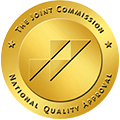As the vibrant leaves of autumn give way to the bare branches of winter, many people find their moods mirroring the season’s gloom. The festive cheer of the holidays may provide a temporary lift, but what happens when the parties are over, leaving us with months of cold, dreary weather? Understanding the impact of these darkening days and exploring ways to cope are crucial for those who find winter particularly challenging.
The Science Behind Seasonal Affective Disorder
Seasonal affective disorder, aptly abbreviated as SAD, is a type of depression that rears its head annually in the fall and persists through winter. It disrupts daily life, casting a shadow over routine activities and dampening the joy in hobbies and social interactions. Common symptoms include a pervasive low mood, a sense of hopelessness, irritability, fatigue, excessive sleep and weight gain. Often, these “hibernation” symptoms last until the brighter, longer days of spring.
The primary trigger for SAD is the reduced sunlight, disrupting your body’s circadian rhythms. This 24-hour internal clock responds to environmental cues, particularly light and darkness. In winter, the shorter days trigger SAD symptoms.
Light Therapy and Beyond
Light therapy is one of the frontline treatments, which involves sitting in front of a specialized light box each morning for at least 30 minutes. This bright light mimics natural sunlight, potentially changing brain chemicals to elevate your mood and ease other seasonal affective disorder symptoms. Doctors recommend continuing light therapy consistently into spring to maintain its benefits.
However, light therapy isn’t a one-size-fits-all solution. For some, antidepressants may be necessary to manage your mood effectively. Additionally, therapy sessions, coupled with lifestyle changes like spending more time outdoors, can be beneficial. Even on overcast days, natural light helps your body produce vitamin D, which plays a crucial role in mood regulation.
Acting Against Winter Blues
If you’re experiencing persistent low mood during winter, seek help. Seasonal affective disorder is temporary, but going several months in a row without treatment is unnecessary and unwise when effective solutions are available.
Remember, the winter blues aren’t just a series of “off days” – they’re a recognized form of depression that deserves attention and care. At Canyon Crossing, we’re here to support you through these seasonal challenges. Reach out to us, and let’s find the best path to keep your spirits up, even when the days are down.



